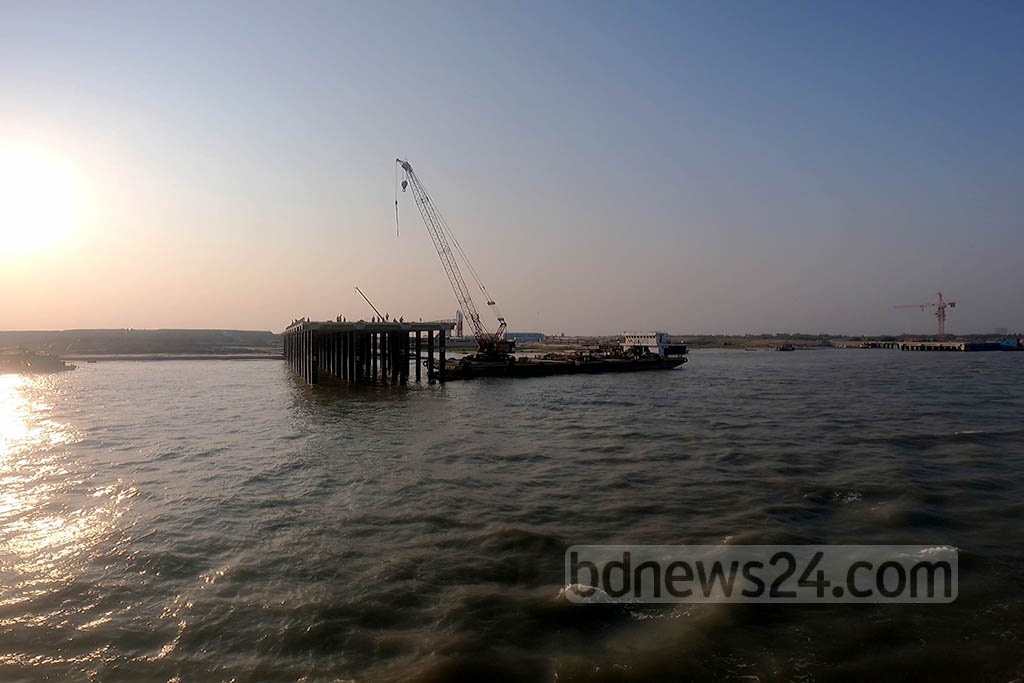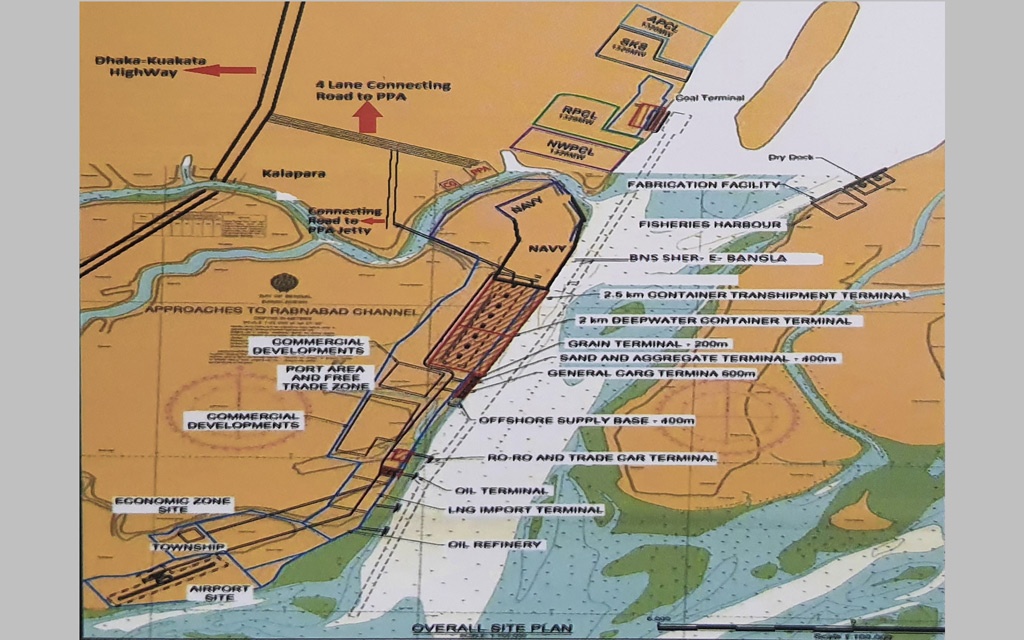Home
+
The Payra port opened commercial operations in 2016 by bringing in a shipment of stone from China for the construction of the Padma Bridge. Fast forward half a decade and much of the project – including the construction of the terminal, jetties and the deepening of the channel – is still incomplete.
Published : 28 Mar 2022, 01:16 AM
Though construction is behind schedule, the port authority for the country’s third largest sea port wants to make the project fully operational by the middle of next year and send a ‘message to the world’.
The port, located at the mouth of the Golachipa river in Patuakhali’s Kalapara Upazila, aims to be a centre of trade and commerce for the southern districts, which are expected to receive an economic shot in the arm with the opening of the Padma Bridge.
According to Rear Admiral Mohammad Sohail, chairman of the Payra Port Authority, all infrastructure work is expected to be complete by June 2023 and the port can be declared fully operational, if all goes according to plan.

A recent visit to the sea port’s construction area showed that work on the administrative infrastructure on the western bank of the Dhankhali river is complete. A crane has also been built there. The 1,320 MW coal-fired power plant is next to that section of the port, while another section is to the east of the plant. Several cranes have been built to unload coal and stone near the area.
Construction work on the main portion of the port, which lies at the mouth of the Golachipa river and the Ramnabad channel some five kilometres away, is still ongoing.
An 80-metre-long and 24-metre-wide service jetty has been completed as part of the Ramnabad channel section, port officials say. The jetty has been being used to bring in and unload materials for construction work for three years. Another 100-metre-long jetty is also used for the same purpose.
The work to set up a 650-metre-long and 90-metre-wide jetty next to the service jetties is ongoing. A 650-metre-long and 500-metre-wide multipurpose container yard is being set up next to the large jetty and the work has progressed 42 percent.

Construction is ongoing on the port terminal, its yard, roads, bridges and culverts, said Rear Admiral Sohail. A significant amount of work is being done in southern Bangladesh around this port. A new export processing zone, or EPZ, is being set up, as are a dockyard, a shipyard, shipbuilding and ship repair projects.
“We hope that this port will be running at full steam by June 2023,” the port chairman said. “The first terminal will be complete, as will the channel dredging.”
Currently, the channel next to the port has an average depth of 6-7 metres, with some parts reaching depths of 14 metres. But the port authority plans to increase the average depth of the channel to 9-10 metres through mining.
Bangladeshi and foreign research institutions scrutinised the viability of the port site, Rear Admiral Sohail said.
The natural depth was already conducive to the construction of a port and only a minor amount of dredging will be necessary to increase the depth substantially, he said.
“Payra Port will not only be known in Bangladesh, or Asia, but the entire world. This port will play a major role in changing the fortunes of the people who live in the south of the country.”
Bangladeshi and foreign institutions are already working at the port, he said.
“We’ve already begun commercial work and we expect major revenue. Our primary dredging work is complete. Capital dredging work will begin in a few months. The work is being done by a Belgian organisation.”
Construction work on the Payra sea port began on 16 acres of land in November 2013.

There were also initial plans to establish a deep-sea port at Payra, but they were later put on hold due to financing issues and other problems.
COMMERCIAL BUSINESS ONGOING
Most of the construction materials brought to Bangladesh for the construction of Padma Bridge came in through Payra Port. The customs and administrative buildings built at the port have been staffed.
Stone and other products came through the port for three years starting in 2016, the port authority said. In 2018, the amount of stone coming through the port was 315,121 tonnes.
In 2019, the port began receiving shipments of coal and also saw more traffic in other goods. In 2019, the port processed 299,992 tonnes of goods, including 136,372 tonnes of coal. The port processed 1.4 million tonnes of goods in 2020 and 1.5 million tonnes in 2021.

Locals hope that when the port is open at full capacity, it will provide work to thousands of young, unemployed men in Bangladesh’s coastal areas.
Md Gias Uddin, president of Patuakhali Chamber of Commerce and Industry, expects the establishment of the port will create thousands of jobs.
Businesses have started buying land for LPG plants and garment factories at an Economic Processing Zone there, according to him.
They have also started discussions with the importers. “We are planning to get at least 30 percent of our goods delivered at Payra.”
Gias said the Payra port will play an important role in Bangladesh’s economy, especially in the southern districts.
“The dream of the south is coming true. Businesses are showing interest in setting up new factories and industries. They have applied to our Chamber for this. The door to development will be open to the south once the port is set up,” he said.